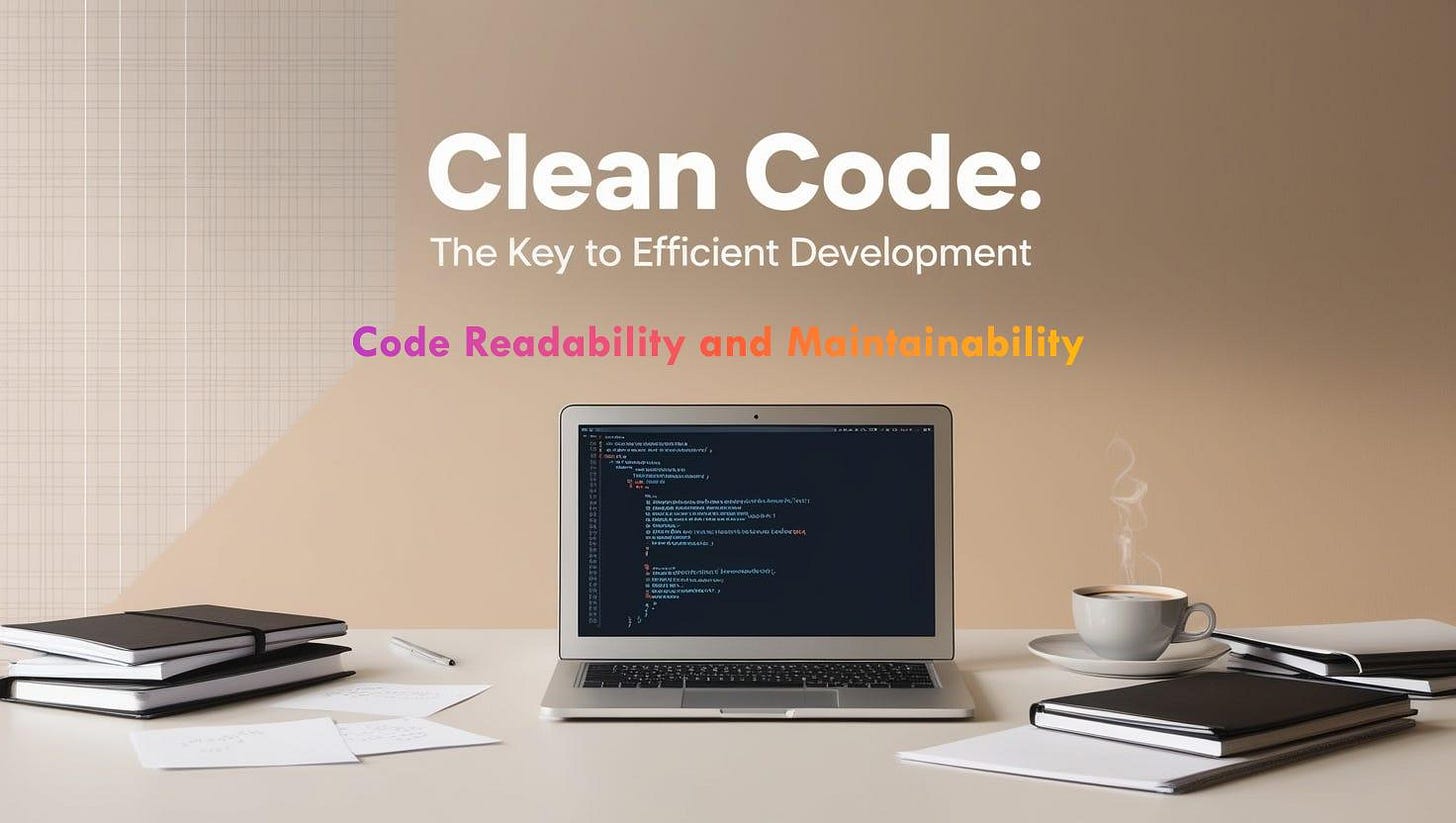Clean Code: CRM - Code Readability and Maintainability
When you write clear, maintainable code, you’re not just helping yourself, you’re creating something others can build on and improve. Even small projects deserve good practices!
Hello again, brave coder 👨💻. In today’s article, we’ll tackle a very important, yet not often discussed in the Tech industry. When you write code, it’s easy to focus on just making it work. But here’s a secret: writing code that others (and future-you) can understand is just as important! That’s where readability and maintainability come in. Let’s explore these two concepts in a simple, and practical way! Ala Barakati Lah!
What Is Code Readability?
Code readability is how easy it is for someone (including yourself!) to read and understand your code. Think of it like writing a recipe: if your instructions are clear, anyone can follow them! But, if that’s not the case, only God will know, haha.
Why Does Readability Matter?
You’ll thank yourself later when you revisit your code and don’t need to spend hours decoding it.
Others can help you if your code is clear, making teamwork easier.
It reduces bugs because clear code is easier to check and fix.
✅Simple Tips for Readable Code:
Use meaningful names: Name your variables and functions so they describe their purpose.
Instead of
x, usetotalScoreoruserName.
Add comments: Write short notes to explain what tricky parts of your code do.
Example:
// Calculate the user's age from their birth year.
Keep it organized: Use proper spacing and indentation, so the code doesn’t look messy.
Bad code example❌(indentation not respected):
if(x>10){print("Too high!")}else{print("OK")}
Good code example ✅ (indentation respected):
if x > 10:
print("Too high!")
else:
print("OK")
What Is Code Maintainability?
Code maintainability is how easy it is to update or fix your code later. Think of it like building a house: if the foundation is strong and the rooms are well-organized, you can easily renovate when needed.
Why Does Maintainability Matter?
Things change: Over time, you or your team might need to add new features or fix bugs.
Saves time: Clean, maintainable code takes less time to update.
Prevents headaches: Poorly written code can turn small changes into huge problems.
✅Simple Tips for Maintainable Code:
Keep it simple: Avoid overcomplicating your code with fancy tricks that aren’t necessary (we all do this, haha).
Example: Use straightforward logic instead of cramming everything into one line (hello JavaScript lovers, haha).
Break it down: Write smaller functions or pieces of code that do one thing well.
Example: Instead of a single giant function, split it into smaller ones like
calculateTotal()andapplyDiscount().
Follow conventions: Stick to common coding practices for your language, so others can easily understand your code.
Combining Readability and Maintainability
Readable code and maintainable code go hand in hand. Here’s how you can achieve both:
Write code for people, not just for computers. Remember, someone (maybe even you!) will need to read and edit your code in the future.
Practice makes perfect. The more you code and review others’ code, the better you’ll get.
An Example: Before and After
Before:
x = 1
y = 2
z = x+y*0.1
print(z)
After:
item_price = 1
tax_rate = 0.1
final_price = item_price + (item_price * tax_rate)
print(final_price) # Show the price with tax included.
Which one would you rather read? (the first one, right? Hahaha)
Conclusion: Your Code is Your Image!
When you write clear, maintainable code, you’re not just helping yourself, you’re creating something others can build on and improve. Even small projects deserve good practices. To learn more about clean code best practices, visit my clean code playlist of articles, where I discussed multiple important patterns. Until then, happy coding guys, see you later!
Stay tuned for the next one!
🔔 Don't forget to subscribe to my blog and YouTube channel to stay updated with all the latest content, follow me on LinkedIn too, if you like to do so!



